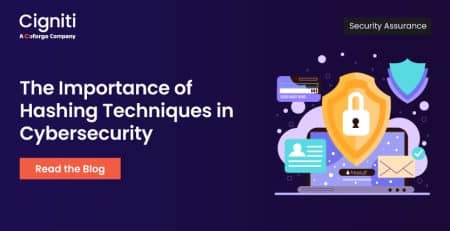Overcoming Data Security Challenges in Cloud Computing
|
Listen on the go!
|
As we transition to a cloud computing architecture, data security and privacy must be given top priority. Data loss or data leakage can negatively affect an organization’s brand, reputation, and customer confidence.
Data misuse is possible when multiple organizations share resources. Therefore, it is essential to protect data repositories as well as the data that is involved in processing, transport, or storage to reduce risk.
The most significant snags in cloud computing are linked to data protection. It’s crucial to offer authentication, authorization, and access control for cloud-stored data to improve security in cloud computing.
According to Gartner, “Cloud security is the fastest growing segment in the market for information security technology and services, with particular interest in innovations to support remote working and digital business acceleration.”
To make sure that data is safe from any assault, the top vulnerabilities should be scrutinized. Therefore, security tests must be performed to safeguard data against malicious user activity, including Cross-Site Scripting and Access Control methods.
In cases when there aren’t many resources available, thin clients are utilized to secure client data. To ensure integrity, users should avoid storing personal information like passwords.
In many firms where downtime is a significant problem, availability is the most crucial issue. It relies on the terms of the client-vendor agreement.
Data Security Challenges in Cloud Computing
In cloud computing, the data is dispersed across numerous regions, making it challenging to pinpoint its location. The regulations governing data can change when it is transported to other geographical regions. Laws governing data privacy and compliance are thus a concern in cloud computing. Customers should be informed by the service provider about the placement of their data.
According to Forrester, “Data security and compliance controls are increasingly built in as features within various non-security technologies and cloud data platforms. Where — as a feature versus as a stand-alone offering — do we source these capabilities from, and what trade-offs come with our decision? Where do common approaches break down, and where do we have gaps that we must address with different techniques?”
The system should maintain security so that only authorized users can modify data. To prevent data loss in a cloud-based system, data integrity must be carefully maintained. To guarantee data integrity, all cloud computing transactions should generally adhere to the ACID properties. Due to the utilization of HTTP services, most web services usually encounter several issues with transaction management. The HTTP service does not guarantee delivery or facilitate transactions. Implementing transaction management within the API itself can take care of the issue.
Data security policies are the main focus of data access. Depending on the organization’s security policies, employees may be granted access to a particular section of data. The second person who works for the same company cannot access the same data.
To make sure that data is exchanged only with authorized users, several encryption techniques and key management systems are employed. Using a variety of key distribution systems, the key is only given out to those who are permitted.
Data security policies need to be closely adhered to protect the data from unauthorized users. Privilege user access is required because all cloud users are granted access via the internet. To reduce security risk, users can utilize data encryption and protection measures.
Users of the cloud store data on distant servers, and information like data, films, etc. can be saved with a single or multiple cloud providers. Data confidentiality is one of the key criteria when data is kept on a distant server. Users should be aware of which data is stored in the cloud and its accessibility to protect data confidentiality and retain comprehension of its classification.
Another significant security concern that should be focused on the cloud is data breaches. Because the cloud stores a lot of data from different users, there is a chance that a malevolent user may infiltrate it, making the entire cloud ecosystem vulnerable to high-value attacks. A breach may happen because of an insider attack or one of several unintended transmission errors.
Multi-tenancy is one of the key aspects of cloud computing. Data intrusion is a risk because multi-tenancy enables the storage of data by multiple users on cloud servers. Data can be injected using any application or by injecting client code. Therefore, data must be stored separately from the data of the remaining customers. Tests like SQL injection, AWS, data validation, and unsecured storage can be used to identify or find data segregation vulnerabilities.
There are various problems with the data kept in virtual machines. Data storage dependability is one of these problems. Virtual computers must be kept in a physical infrastructure, which could be risky from a security standpoint.
Organizations adopting cloud computing apps must safeguard user data without losing it in the event of data transfer delays and disasters. Data storage and access become problematic if data is not managed appropriately. The cloud service providers are accountable for any data loss in the event of a disaster.
Solutions to Data Security Challenges
Information security is advocated as being improved via encryption. Data should ideally be encrypted prior to being stored on a cloud server. The Data Owner may grant access to a certain group member so they can simply view the data.
Data access control is to be provided through heterogeneous data-centric security. To increase the security of data in the cloud, a data security model that includes authentication, data encryption and integrity, data recovery, and user protection must be created.
Data protection can be used as a service to guarantee privacy and data security. Applying encryption to data that renders it completely useless as well as standard encryption can complicate availability and prevent access from other users.
Users are advised to confirm that the data is kept on backup drives and that the keywords in the files have not changed before uploading data to the cloud. The data won’t be altered if the file’s hash is calculated before being uploaded to cloud servers. Although this hash calculation can be used to ensure data integrity, it is quite challenging to keep it up-to-date.
By integrating identity-based cryptography and RSA Signature, an RSA-based data integrity check can be offered. SaaS ensures that there must be distinct divisions between users’ data at the application and physical levels. Access control in cloud computing can be managed using a distributed access control architecture.
The adoption of credential or attribute-based controls is preferable for identifying illegal users. It is possible to inform the user of which portions of the data they can access using permission as a service. The owner can assign most computationally heavy tasks to cloud servers without disclosing the contents of the data thanks to fine-grained access control mechanisms.
A data-driven framework can be created for the processing and sharing of data across cloud users in a secure manner. Real-time threat detection is accomplished via network-based intrusion prevention systems. The use of RSA-based storage security can compute huge files of various sizes and address distant data security.
Conclusion
Although cloud computing has many advantages for users, it also has several security issues. In the future, the development of cloud computing security standards is possible. Advanced encryption techniques can be employed to store and retrieve data from the cloud to ensure safe data access. The key can be distributed to cloud users using appropriate key management mechanisms as well, ensuring that only people with permission can access the data.
Cloud security is essential to assess the security of your operating systems and applications running on the cloud. Ensuring ongoing security in the cloud requires not only equipping your cloud instances with defensive security controls but also regularly assessing their ability to withstand the latest data breach threats.
Cigniti’s team validates whether your cloud deployment is secure and gives you actionable remediation information when it’s not complying with the standards. The team conducts proactive, real-world security tests using the same techniques employed by attackers seeking to breach your cloud-based systems and applications.
Need help? Consult our experienced team of cloud application security testing experts to overcome data security challenges in cloud computing.





Leave a Reply